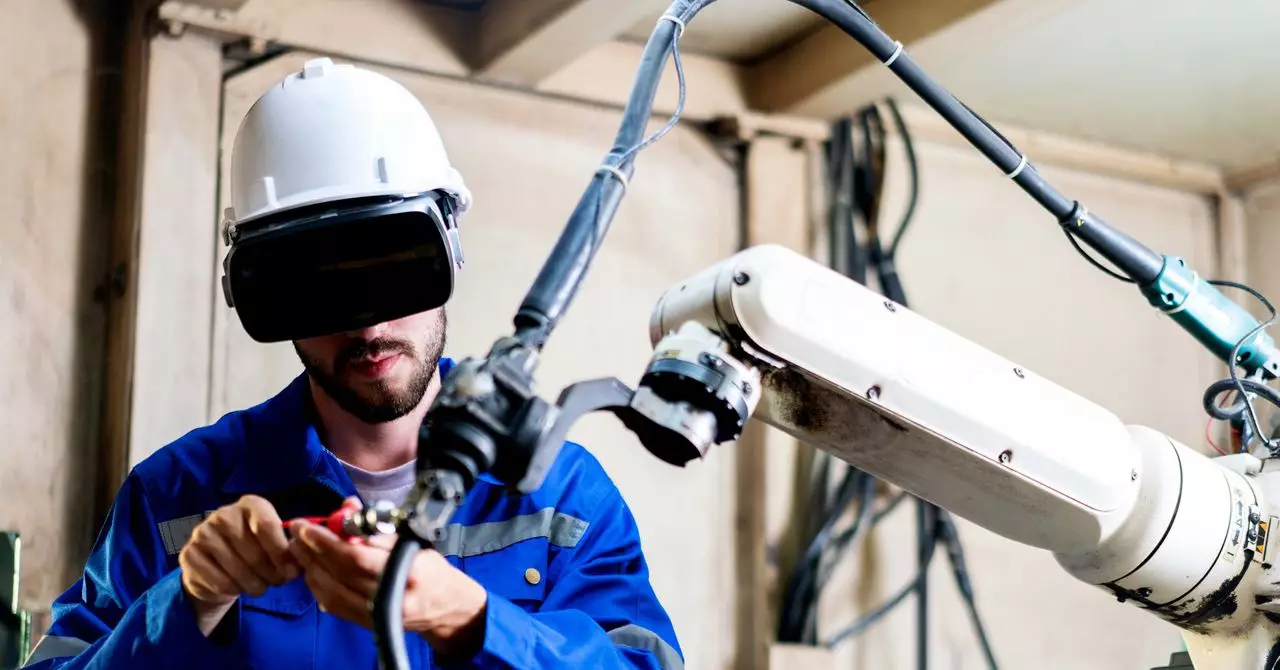The industrial landscape is undergoing a dramatic transformation that extends far beyond conventional manufacturing processes. The advent of the industrial metaverse—essentially a seamless blend of the physical and digital realms—serves as a testament to the significant strides made in technology. By enabling manufacturers to visualize complex processes and systems in a digital environment, this innovative approach not merely enhances efficiency, but also paves the way for unprecedented advancements in production methodologies. While the consumer-focused iterations of the metaverse have seen their share of challenges, the industrial variant is poised for explosive growth, projected to reach a staggering $100 billion valuation by 2030 according to insights from the World Economic Forum.
High-Tech Simulations as a Game-Changer
Gone are the days when manufacturers would resort to laborious physical trials to assess the feasibility of production setups. The introduction of simulation technology is radically changing how automotive giants and other manufacturers test their ideas. Instead of pushing a car chassis through a physical assembly line—an undertaking that could easily lead to unforeseen complications—companies can now construct a hyper-realistic digital twin that mimics their factory operations. This paradigm shift allows engineers to identify and address potential bottlenecks before the real-world application, significantly optimizing time and financial resources.
The implications of this technology are immense. For example, a manufacturing unit can design a new assembly line and determine its efficacy without ever lifting a finger in a physical space. This approach not only accelerates product development timelines but also minimizes waste, demonstrating a commitment to more sustainable manufacturing practices.
Spatial Computing: The Future of Design
Varvn Aryacetas from Deloitte proposes an invigorating perspective on this phenomenon by referring to it as “spatial computing.” This concept embodies the integration of various advanced technologies—augmented reality (AR), simulations, sensors, and standardized 3D modeling—which work together to enhance real-world processes through digital means. The applications of spatial computing are as diverse as they are transformative. From augmented training programs in virtual reality to the creation of detailed digital product designs, the industrial metaverse offers an unprecedented toolkit for innovation.
For instance, Lowe’s has adopted this approach, utilizing the Omniverse platform from Nvidia to simulate store layouts before implementing them physically. Such preparatory steps not only save costs but also enhance customer experience by optimizing store design.
Nvidia’s Omniverse: Crafting the Digital Future
At the forefront of the industrial metaverse is Nvidia’s Omniverse, an exceptional platform that facilitates the creation and manipulation of digital twins. This versatile software serves as the backbone for a wide array of applications, spanning from product design to full-scale manufacturing simulations. Rev Lebaredian, Nvidia’s vice president, reinforces the practicality of this technology by emphasizing its indispensable role in representing the real world within computer simulations. The importance of such representations is magnified when systems are designed to operate autonomously, as accurate simulations become critical to success.
Companies including BMW, Amazon, and Zaha Hadid Architects have leveraged the capabilities of Omniverse to pioneer new efficiencies and creative possibilities. While BMW utilizes it for preemptive virtual modeling of factories, Amazon’s innovations in warehouse robotics training underscore the adaptability of this tool across diverse industries.
A Bright Future Ahead
The industrial metaverse represents a significant leap forward in operational excellence, marrying technology with human insight to reshape manufacturing as we know it. The incredible versatility of tools like Nvidia’s Omniverse offers a glimpse into future possibilities, ranging from smart factories to efficient supply chain management. While the digital transformation may pose challenges, it undoubtedly equips organizations to navigate complexities with unprecedented agility.
As industries lean into this revolutionary technological shift, the understandings we cultivate today will set the precedent for tomorrow’s manufacturing standards. Ultimately, the integration of digital twins and simulacra will not just change how products are made, but also how we conceive innovation in an increasingly digitized world. Companies prepared to embrace these changes will undoubtedly lead the charge into a thoroughly redefined industrial landscape.


Leave a Reply